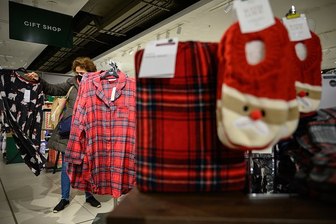For what may come as no surprise to some, British women really do shop more than men, our poll suggests. Our findings show that women actually buy clothes almost twice as much as men per month, while over a third more women than men go looking for clothes once or twice a month. Nearly 3 in 5 men buy clothes just once or twice a year.
However, many women’s wardrobes across the country must be full to bursting, as a third apiece of both sexes say that they wear a piece of new clothing until it wears out, rather than getting bored of it within weeks of purchase.
- 37% of women will go shopping to look for new clothes once or twice a month compared to just 25% of men
- However, 44% of men will go shopping just to look for clothes once to twice a year compared to just 32% of women
- 21% of men say they go looking for clothes to buy less than once a year; 12% of women say the same
- When it comes to actually reaching the checkout, 44% of women will buy new clothes once or twice a month compared to 24% of men
- Conversely, 58% of men say they only buy clothes up to just twice a year, compared to 42% of women who buy this often
- 32% of men and 30% of women would say they continue to wear a new item of clothing until it wears out
- However, 16% of women would only wear a new item of clothing for around 1-6 months after purchase, compared to 10% of men saying the same
Inevitable?
In a recent study, psychologist Dr Karen Pine put forward her own controversial explanation for why women shop more than men. Comparing sales figures for girls’ clothes with those of boys’, she said, ‘Human society puts a great deal of emphasis on female appearance and this will inevitably result in more clothes being purchased for girls than boys,’ inferring that the ‘girls love to shop’ stereotype begins in childhood, when, Pine suggests, daughters are bought more clothes than sons. Pine’s comments did not explicitly deal with her critics’ suggestions that advertising and marketing might play more of a role in women’s shopping habits.
‘Youth focussed’
Relatedly, it may come as a surprise to some that, in a time of high youth unemployment and shrinking disposable incomes, our poll shows that twice as many 18-24 year olds buy clothes monthly than the over 60s. Retail guru Mary Portas, who alongside her day job as a retail expert, has presented many television shows featuring struggling high-street shops, often refers to the absence of clothes available to the older shopper, which may go some way to explaining the trend. Referring to her bid to ‘restore quality to the high street’, Portas has criticised some high street shops for presenting a ‘glut of youth-focused, fast fashion’ and little else.






